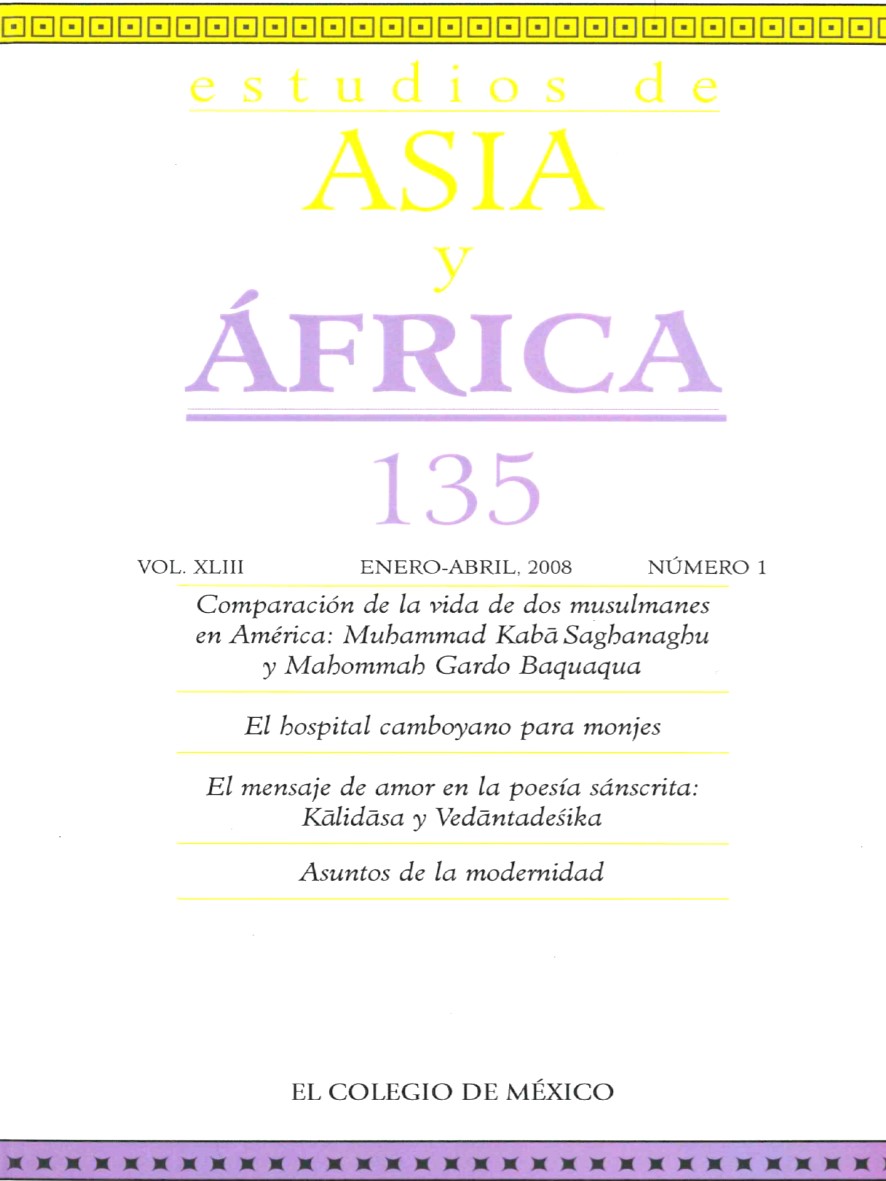Resumen
La siguiente traducción de los 79 aforismos que componen los Śiva-Sūtra o Aforismos de Śiva, tiene por objeto presentar al lector de habla hispana una versión directa del sánscrito, con un propósito central: transmitir al castellano, en la medida en que una traducción lo permite, el sentido y función de un sūtra, esto es, una oración breve con un profundo sentido filosófico y no una explicación extensa al estilo de un tratado occidental.
Referencias
Textos en sánscrito
Paramarthasara of Abhinavagupta with Commentary of Yogaraja, J.C. Chatterji (ed.), Srinagar, KSTS 7, 1916.
Paryantapañcasika of Abhinavagupta, V. Raghavan (ed.), en Abhinavagupta and his Works, Varanasi, Chaukahamba Oriental Research Studies, 1981, pp. 41-69.
Pratyabhijñahrdaya, J. C. Chatterji (ed.), Srinagar, KSTS 3, 1668.
Malinîvijayavarttika of Abhinavagupta, edición con notas de Madhusudan Kaul Sastrî, Srinagar, KSTS 31, 1921.
Siva-sutra of Vasugupta with Commentary of Bhaskara, J. C. Chatterji (ed.), Srinagar, KSTS 4-5, 1916.
Spanda-karika with commentary (vritti) of Kallata, J. C. Chatterji (ed.), Srinagar, KSTS 4-5, 1916.
Traducciones y estudios
ABHINAVAGUPTA, Isvara-pratyabhijña-vimarsinî, K. C. Pandey (trad.), Delhi, Motilal Banarsidass, 1986.
ABHINAVAGUPTA,La Lumiére sur les Tantras, chapitres 1 à 5 du Tantraloka (traducido y comentado por Lilian Silburn y André Padoux), París, Institut de Civilization Indienne, 2000.
ABHINAVAGUPTA, Paratrîsika-Vivarana. The Secret of Tantric Mysticism, JaidevaSingh (trad.), Delhi, 1996.
BHASKARA, A Commentary on the Isvara-pratyabhijña-vimarsinî of Abhinavagupta, Allahabad, Subramania Iyer y K. C. Pandey, 1950.
CHATTERJI, J. C., Kashmir Shaivism, Nueva York, SUNY, 1986.
DYCZKOWSKI, Mark S. G., The Canon of the Saivagama and the Kubjika Tantras of the Western Kaula Tradition, Nueva York, State University of New York Press, 1988.
DYCZKOWSKI, The Doctrine of Vibration. An Análisis of the Doctrines and Practices of Kashmir Shaivism, Delhi, Motilal Banarsidass, 1989.
DYCZKOWSKI, The Stanzas on Vibration. The Spandakarika with Four Commentaries, Varanasi, Dilip Kumar Publishers, 1994.
DYCZKOWSKI, The Aphorisms of Siva. The Siva Sutra with Bhaskara’s Commentary, the Varttika, Mark S. G. Dyczkowski (trad.), Nueva Delhi, Indica Books, 1998.
DYCZKOWSKI, A Journey in the World of the Tantras, Varanasi, Indica Books, 2004.
GNOLI, R., La luce delle Sacre Scritture (Tantraloka), Torino, Classici Utet Boringheri, 1972.
K.SEMARAJA, Pratyabhijña-hrdayam. The Secret of Recognition, JaidevaSingh (trad.), Delhi, Motilal Banarsidass Publishers, 1998.
MULLER-ORTEGA, Paul E., “Tantric meditation: vocalic beginnings”,en Goudriaan, Ritual and Speculation in Early Tantrism. Studiesin Honor of André Padoux, Nueva York, SUNY, 1992.
MULLER-ORTEGA, Paul E., The Triadic Heart of Siva, Delhi, Published Sri Satguru Publications, 1997.
PADOUX, André, Vac. The Concept of the Word in Selected Hindu Tantras, Nueva York, SUNY, 1990.
PANDEY, Kanti Chandra, Abhinavagupta. An Historical and Philosophical Study, Varanasi, Chowkamba Sanskrit Series, 1963.
RAGHAVAN, V., Abhinavagupta and his Works, Varanasi, Chaukhambha Oriental Research Studies, núm. 20, 1981.
RASTOGI, Navjivan, The Krama Tantricism of Kashmir. Historical andGeneral Sources, vol. I, Delhi, Motilal Banarsidass Publishers, 1996.
SANDERSON, Alexis, “The Saiva exegesis of Kashmir”, en Mélangestantriques à la mémoire d’Hélène Brunner/Tantric Studies in Memory of Hélène Brunner, Dominic Goodall y André Padoux (eds.), Pondicherry, Institut français d’Indologie/École française d’Extrême-Orient, 2007 [Collection Indologie 106], pp. 231-442 y 551-582 (bibliografía).
SANDERSON, Alexis, “The doctrine of the Malinîvijayottaratantra”, en Teun Goudriaan (ed.), Ritual and Speculation in Early Tantrism. Studies inHonor of André Padoux, New York, SUNNY, 1992, pp. 281-312.
SANDERSON, Alexis, “The Visualization of the Deities of the Trika”, en André Padoux (ed.), L’Image Divine, París, Editions du CNRS, 1990, pp. 31-88.
SANDERSON, Alexis, “Saivism and the tantric traditions”, en S. Sutherland et al. (eds.), The World’s Religions, Londres, Routledge, 1988, pp. 660-704.
SEN SHARMA, Deba Brata, The Philoshopy of Sadhana, Nueva York, State University of New York Press, 1990.
SHARMA, L. N., Kashmir Saivism, Delhi, Publisher Bharatiya Vidya Prakashan, 1996.
SILBURN, L. (trad.), Spandakarika Stances sur la Vibration de Vasugupta, París, Institut de Civilization Indienne, 1990.
SINGH, Jaideva (trad.), Vijñanabhairava or Divine Consciousness, Delhi, Motilal Banarsidass Publishers, 1999.
TORELLA, R., The Isvarapratyabhijñakarika of Utpaladeva with the author’s v.rtti, Critical Edition and annotated translation, Delhi, Motilal Banarsidass, 2002.
SOMADEVA, V., The Yoga of the Malinîvijayottaratantra (edición crítica y notas), Pondicherry, Institute Française de Pondichery, École Française d’Extrême-Orient, 2004, caps. 1-4, 7, 11-17.
VASUGUPTA, Siva Sutras. The Yoga of Supreme Identity, Jaideva Singh (trad.), Delhi, Motilal Banarsidass Publishers, 1991.
Esta obra está bajo una licencia internacional Creative Commons Atribución-NoComercial-SinDerivadas 4.0.
Derechos de autor 2022 Estudios de Asia y África


